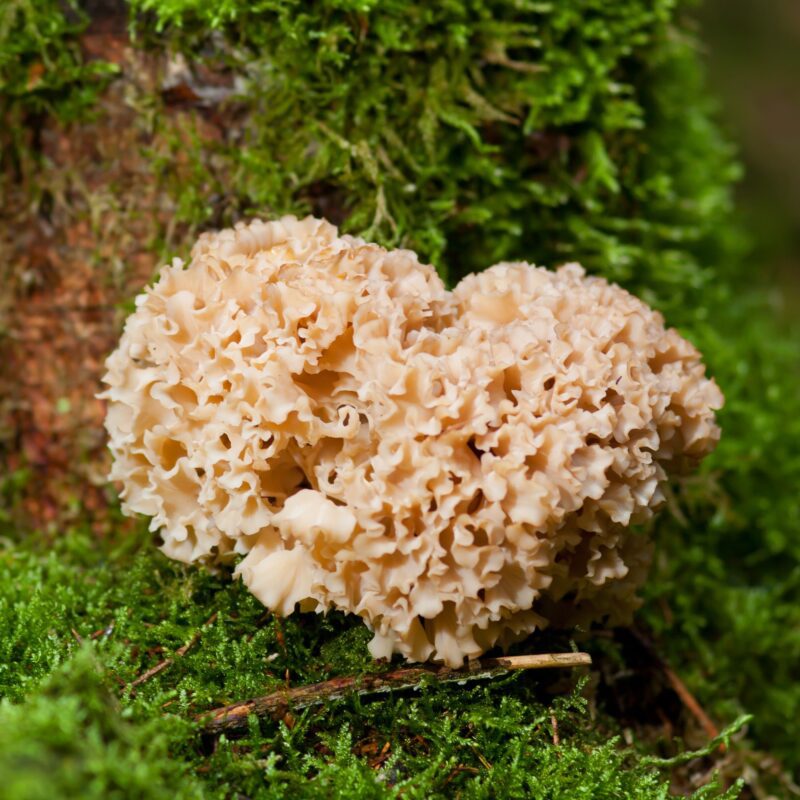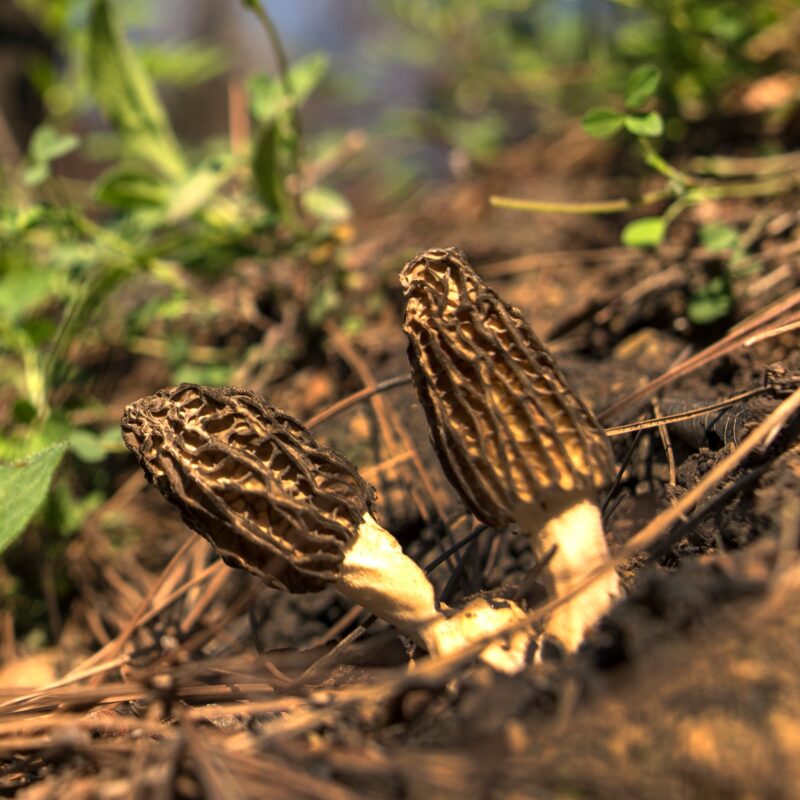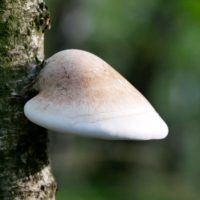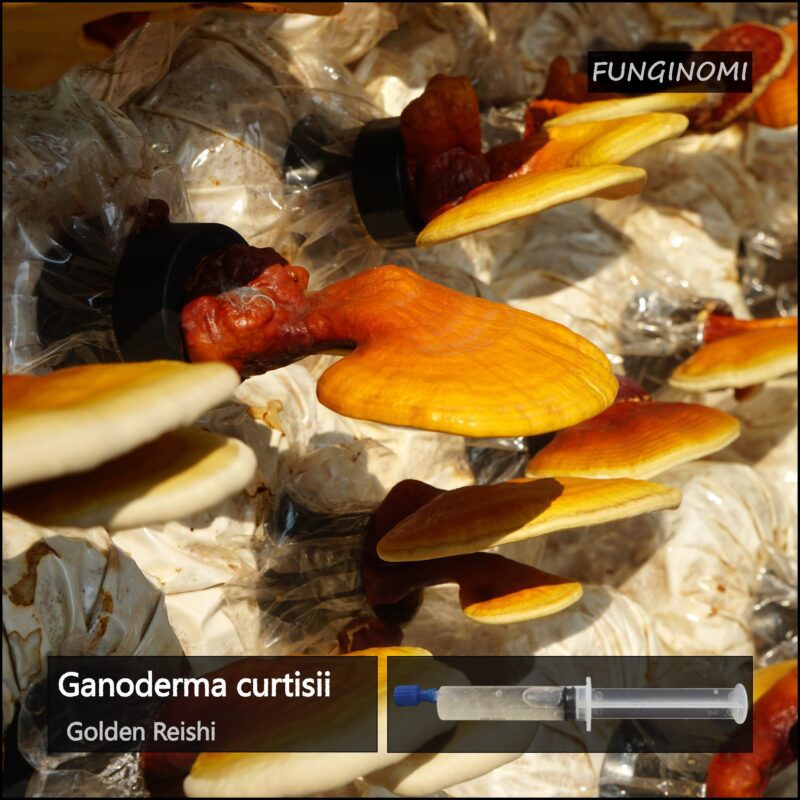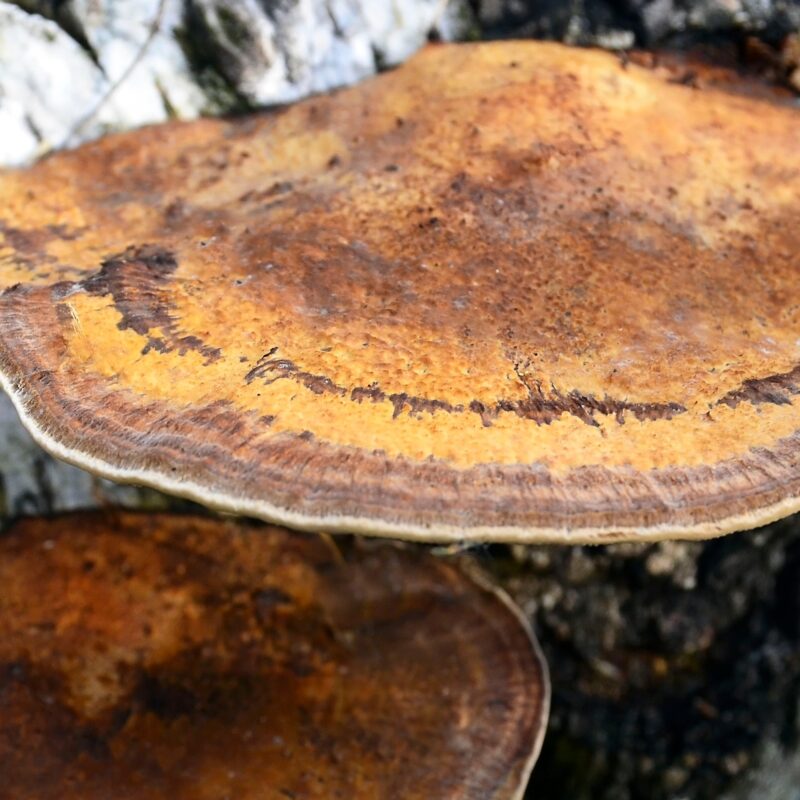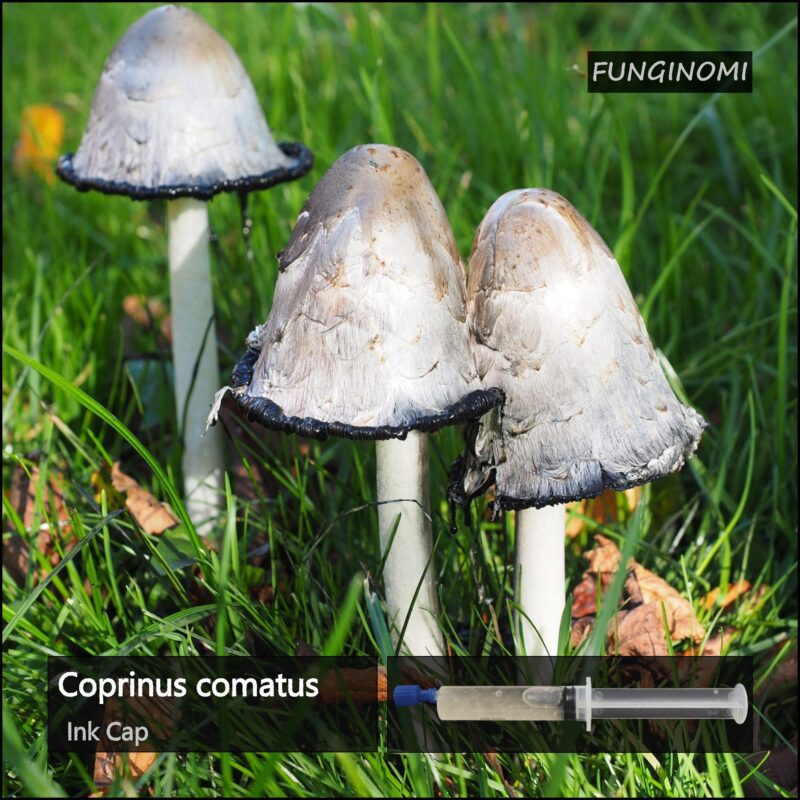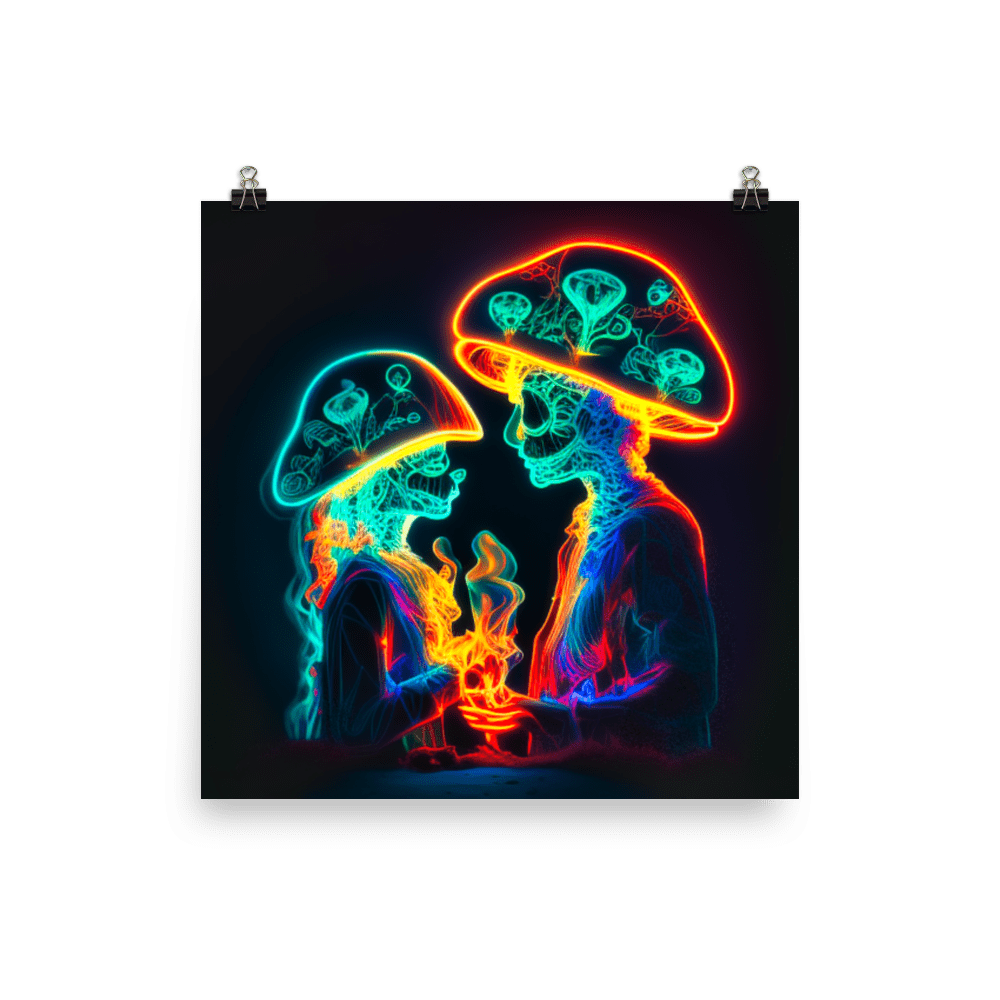A Comprehensive Guide to the Life Cycle of Mushrooms
Introduction to the Mushroom Life Cycle

Importance of understanding the life cycle of mushrooms
Importance of understanding the life cycle of mushrooms
- Mushrooms are captivating organisms that follow a fascinating life cycle. Exploring and comprehending their life cycle is essential for mushroom enthusiasts and cultivators alike. By understanding the intricacies of this process, you can gain valuable insights into the growth, reproduction, and cultivation of these remarkable fungi.
In this guide, we will delve into the various stages of the mushroom life cycle and highlight the significance of each phase. Whether you are an aspiring mycologist, a hobbyist, or simply intrigued by the world of fungi, this comprehensive guide will provide you with the knowledge you need to appreciate and engage with mushrooms at a deeper level. Let’s embark on this captivating journey through the mushroom’s life cycle together.
Brief overview of the mushroom life cycle stages
Brief overview of the mushroom life cycle stages
The life cycle of a mushroom encompasses several distinct stages, each playing a crucial role in the growth and reproduction of these fascinating fungi. Here’s a brief overview of the key stages:
1. Spore Dispersal
- The life cycle begins with the release of mushroom spores. These microscopic reproductive units are typically carried by wind or other means to new environments where they can potentially germinate and grow.
2. Spore Germination
- When favorable conditions are met, spores germinate and develop into thread-like structures called hyphae. These hyphae extend and branch out, forming a network known as the mycelium.
3. Mycelium Growth
- The mycelium expands and absorbs nutrients from its surrounding environment, breaking down organic matter. As the mycelium continues to grow, it forms a vast network of interconnected hyphae.
4. Primordia Formation
- Under specific conditions, the mycelium begins to develop small, pin-like structures called primordia. These primordia are the early stage of mushroom formation and often appear as tiny bumps on the substrate.
5. Mushroom Development
- The primordia grow and mature, elongating into what is commonly recognized as a mushroom. During this stage, the mushroom undergoes rapid growth, expanding in size and developing its cap and stem structure.
6. Spore Production and Dissemination
- As the mushroom reaches maturity, it develops gills, pores, or other structures on its underside that contain thousands of spores. These spores are eventually released into the surrounding environment, continuing the life cycle of mushrooms.
Understanding the distinct stages of the mushroom life cycle is essential for successfully cultivating and appreciating these unique organisms. In the following sections, we will delve deeper into each stage, providing valuable insights and practical information to enhance your understanding of the remarkable world of mushrooms.
Stage 1: Spore Germination
Definition and significance of spores
- Spores are the reproductive units of mushrooms, akin to seeds in plants. They are tiny, single-celled structures that vary in size, shape, and color depending on the mushroom species. Spores are produced in large quantities by the gills, pores, or other reproductive structures of mature mushrooms.
Significance of Spores
- Spores play a pivotal role in the life cycle of mushrooms, enabling their dispersal, germination, and subsequent growth. They are vital for the reproduction and survival of mushrooms in various environments. Here’s why spores are significant:
-
Dispersal: Spores are easily carried by wind, water, or other organisms, allowing mushrooms to colonize new habitats. This dispersal mechanism ensures genetic diversity and enhances the chances of mushroom survival.
-
Germination: When conditions are favorable, spores germinate, initiating the growth of a new mycelium. Germination involves the spore developing a thread-like structure called a hypha, which serves as the building block of the mycelium.
-
Genetic Variation: Each spore contains a unique combination of genetic information. When spores germinate, they give rise to genetically distinct mycelia, contributing to the diversity of mushroom populations.
-
Adaptability: Spores are highly resilient structures that can withstand harsh environmental conditions, such as extreme temperatures or drought. This adaptability allows mushrooms to colonize diverse habitats and thrive in different ecosystems.
-
Cultivation: Spores are essential for mushroom cultivation. Cultivators often collect and use spores to inoculate growing substrates, initiating the growth of mycelium and ultimately yielding mushrooms.
Understanding the importance of spores in the mushroom life cycle provides a foundation for appreciating their ecological significance and practical applications in cultivation. In the next section, we will explore the process of spore germination and the subsequent development of mycelium.
Conditions required for spore germination
Spore germination is a critical stage in the mushroom life cycle, where spores transform into mycelium, the vegetative part of the fungus. The germination process is influenced by specific environmental conditions. Here are the key factors that facilitate spore germination:
-
Moisture: Adequate moisture is crucial for spore germination. Spores need a moist environment to absorb water and activate the biochemical processes that initiate germination. Dry conditions can prevent or significantly slow down germination.
-
Temperature: Different mushroom species have varying temperature preferences for spore germination. Generally, a temperature range of 18-25°C (64-77°F) is favorable for most common mushroom varieties. It’s essential to research the specific temperature requirements for the mushroom species you are working with.
-
Substrate: Spores require a suitable substrate to germinate. The substrate is the organic material on which the mycelium grows. It can be various types of materials such as sawdust, wood chips, straw, or compost. The choice of substrate depends on the mushroom species and its nutritional requirements.
-
Nutrients: Spores need access to nutrients present in the substrate to fuel germination and subsequent mycelium growth. The composition and quality of the substrate directly impact the germination process. Some mushroom species have specific nutrient preferences, such as lignin-rich substrates for wood-loving mushrooms.
-
Air Quality: Good air quality is important for spore germination. Proper ventilation ensures a fresh supply of oxygen, which supports metabolic activities during germination. Stagnant or polluted air can hinder spore germination and the overall growth of mycelium.
By providing optimal conditions of moisture, temperature, suitable substrate, nutrient availability, and proper air quality, you can create an environment conducive to spore germination. It is essential to research the specific requirements of the mushroom species you are working with, as different species may have unique preferences and adaptations.
In the next section, we will explore the growth and development of mycelium, the next stage in the mushroom life cycle.
Detailed explanation of the germination process
Spore germination is a crucial step in the mushroom life cycle, marking the transition from dormant spores to actively growing mycelium. Understanding the germination process provides insights into the early stages of mushroom development. Here is a detailed explanation of the germination process:
-
Spore Activation: Spores are triggered to germinate when exposed to favorable environmental conditions. Moisture plays a vital role in activating the spores, as it allows them to absorb water and rehydrate. The presence of water initiates metabolic processes within the spore, preparing it for germination.
-
Hyphal Emergence: Once activated, the spore undergoes internal changes, and a structure called the germ tube emerges from the spore wall. The germ tube elongates and develops into a single hypha—a thin, filamentous structure that serves as the building block of the mycelium.
-
Mycelium Initiation: As the germ tube grows, it branches out, forming a network of interconnected hyphae. This network is collectively known as the mycelium. The mycelium serves as the vegetative body of the mushroom, responsible for nutrient absorption and expansion.
-
Nutrient Absorption: The mycelium extends and explores its surroundings in search of organic matter and nutrients. It secretes enzymes that break down complex substances like cellulose and lignin into simpler forms that can be absorbed and utilized as nourishment for growth.
-
Mycelium Expansion: With a steady supply of moisture, nutrients, and suitable environmental conditions, the mycelium expands, colonizing the substrate or surrounding medium. It spreads through the organic material, breaking it down and transforming it into a substrate suitable for mushroom development.
The germination process can vary in duration depending on the mushroom species and environmental conditions. Some species may germinate quickly within a few days, while others may take several weeks. It is important to maintain optimal conditions of moisture, temperature, and nutrient availability to facilitate successful spore germination.
By understanding the germination process, mushroom enthusiasts and cultivators can optimize their cultivation practices, ensuring the healthy development of mycelium and eventually the formation of mature mushrooms. In the next section, we will explore the growth of the mycelium and its significance in the mushroom life cycle.
Stage 2: Mycelium Growth
Formation of mycelium from germinated spores
After spore germination, the next stage in the mushroom life cycle is mycelium growth. The mycelium is the vegetative part of the fungus, composed of a network of interconnected hyphae. Let’s explore the formation and significance of mycelium:
1. Hyphal Extension: Once the spores germinate and the germ tube emerges, it elongates and branches out, forming hyphae. These hyphae continue to grow and extend, exploring the surrounding environment.
2. Branching and Fusion: As the hyphae grow, they branch and fuse with neighboring hyphae. This branching and fusion process creates an intricate network of hyphae, forming the mycelium. The mycelium expands further by extending hyphae into new areas, seeking nutrients and space for colonization.
3. Nutrient Absorption: The mycelium plays a vital role in nutrient acquisition. Through the release of enzymes, the hyphae break down complex organic matter in the substrate, such as cellulose or lignin. This enzymatic activity allows the mycelium to extract essential nutrients needed for growth and development.
4. Substrate Colonization: As the mycelium grows, it colonizes the substrate, breaking it down and converting it into a more suitable medium for mushroom development. The mycelium’s ability to decompose organic matter contributes to the recycling of nutrients in the ecosystem.
5. Expansion and Maturation: With favorable conditions of moisture, temperature, and nutrient availability, the mycelium continues to expand, covering a larger area. As the mycelium matures, it develops a stronger network of hyphae, enhancing its ability to absorb nutrients and support future mushroom formation.
The mycelium serves as the foundation for mushroom growth, providing a network of nutrient-absorbing hyphae. It acts as a conduit for water and nutrients, supporting the overall health and vitality of the fungus. Mycelium growth is essential for the efficient colonization of the substrate and the eventual formation of mushrooms.
Understanding the growth and development of mycelium allows mushroom enthusiasts and cultivators to create optimal conditions for healthy mycelial expansion. In the next section, we will explore the formation of primordia, which marks the transition from mycelium to mushroom formation.
Role of mycelium in mushroom development
Mycelium plays a crucial role in the development of mushrooms, serving as the foundation for their growth and providing essential functions throughout the process. Let’s explore the key roles of mycelium in mushroom development:
1. Nutrient Absorption: The mycelium acts as the primary nutrient absorber for the developing mushroom. Its network of hyphae extends throughout the substrate, breaking down complex organic matter into simpler forms that can be easily absorbed. Through enzymatic activity, the mycelium releases enzymes to decompose the substrate and extract vital nutrients necessary for mushroom growth.
2. Water and Nutrient Transport: The mycelium functions as a conduit for water and nutrients. Its network of hyphae absorbs water from the surrounding environment and distributes it to different parts of the mushroom. Similarly, nutrients acquired by the mycelium are transported to the developing mushroom, providing the necessary resources for its growth and maturation.
3. Structural Support: As the mycelium grows and expands, it creates a network of interconnected hyphae that provide structural support for the developing mushroom. This network acts as a framework, ensuring stability and integrity during mushroom formation.
4. Metabolite Production: The mycelium produces various metabolites, such as enzymes, organic acids, and growth factors, which contribute to mushroom development. These metabolites aid in the breakdown of complex organic matter, stimulate mushroom primordia formation, and influence the growth and differentiation of mushroom tissues.
5. Primordia Initiation: Under suitable environmental conditions, the mycelium initiates the formation of small, pin-like structures called primordia. These primordia serve as the early stage of mushroom development. The mycelium’s interactions with environmental cues, including temperature, humidity, and light, play a crucial role in primordia initiation.
6. Spore Production: Once the primordia develop into mature mushrooms, the mycelium facilitates spore production. Specialized structures, such as gills or pores, are formed on the underside of the mushroom cap. These structures house numerous spores, which are released into the environment to complete the mushroom life cycle.
Understanding the role of mycelium in mushroom development is essential for successful cultivation and appreciation of mushrooms. By providing optimal conditions for mycelial growth, nutrient availability, and environmental cues, mushroom enthusiasts can promote healthy mycelium development and maximize the chances of robust mushroom formation.
In the next section, we will delve into the specific stages of mushroom development, from primordia formation to the maturation of mushrooms ready for spore production.
Factors influencing mycelium growth
The growth and development of mycelium, the vegetative part of mushrooms, are influenced by various factors. Understanding these factors is crucial for cultivating healthy and robust mycelial networks. Here are the key factors that influence mycelium growth:
-
Substrate Composition: The composition of the substrate (the medium on which the mycelium grows) is a critical factor. Different mushroom species have specific substrate preferences based on their nutritional requirements. The substrate should provide an adequate source of nutrients, such as carbohydrates, proteins, and minerals, to support mycelial growth.
-
Moisture Levels: Adequate moisture is essential for mycelium growth. The mycelium requires a moist environment to absorb water and facilitate biochemical processes. Dry conditions can hinder mycelial expansion and lead to reduced growth rates or even dormancy. Maintaining optimal moisture levels is crucial for healthy mycelium development.
-
Temperature: Temperature significantly affects mycelium growth. Different mushroom species have specific temperature ranges within which their mycelium thrives. Generally, temperatures between 18-25°C (64-77°F) are suitable for most common mushroom varieties. Temperature influences enzymatic activity, metabolic processes, and overall growth rates of the mycelium.
-
Oxygen Availability: Adequate oxygen is necessary for mycelium growth as it supports respiration and metabolic activities. Proper ventilation ensures a fresh supply of oxygen and promotes healthy mycelial development. Stagnant or poorly ventilated environments can lead to sluggish growth and increased susceptibility to contamination.
-
pH Level: The pH level of the substrate affects mycelium growth. Most mushrooms prefer a slightly acidic to neutral pH range of around 5.5-7.5. Deviations from the optimal pH range can impede nutrient availability and hinder mycelial expansion. Adjusting the pH of the substrate to match the mushroom’s requirements is crucial for successful cultivation.
-
Light Exposure: While mycelium primarily grows in darkness, light exposure can influence certain aspects of mushroom development. Some mushroom species require a specific duration and intensity of light to trigger certain stages, such as primordia initiation. However, excessive or prolonged light exposure can negatively impact mycelium growth and lead to abnormal development.
-
Contamination Control: Maintaining a clean and sterile environment is essential to prevent contamination by competing fungi or bacteria. Contaminants can inhibit mycelium growth and compromise the overall health of the culture. Practicing proper hygiene, using sterilized equipment and substrates, and implementing appropriate sterilization techniques are crucial for successful mycelium growth.
By considering and optimizing these factors, mushroom enthusiasts can create favorable conditions for robust mycelium growth. It is important to research the specific requirements of the mushroom species you are working with, as each species may have unique preferences and adaptations.
In the next section, we will explore the formation of primordia, which marks an important transition in the mushroom life cycle.
Stage 3: Primordia Formation
Definition and characteristics of primordia
After the growth of mycelium, the next significant stage in the mushroom life cycle is primordia formation. Primordia are small, distinct structures that serve as the precursors to mature mushrooms. Let’s delve into the definition and characteristics of primordia:
1. Definition: Primordia are the early developmental structures that emerge from the mycelium. They are often referred to as primordial or pinheads and can be observed as small protrusions on the surface of the substrate or growing medium. Primordia signify the transition from mycelium to the formation of mushrooms.
2. Morphological Characteristics: Primordia exhibit specific morphological characteristics that distinguish them from the surrounding mycelium. They are usually rounded or oval-shaped and appear as small bumps or knots on the surface. Primordia are compact structures, densely packed with hyphae, and can range in size from a few millimeters to a centimeter.
3. Differentiation: Primordia represent the initiation of specific tissues and structures that will eventually form the mature mushroom. At this stage, the mycelium undergoes a process called differentiation, where specialized structures, such as caps, stems, and gills, begin to form within the primordia. These structures are essential for spore production and eventual mushroom maturation.
4. Environmental Triggers: The formation of primordia is influenced by various environmental factors, including temperature, humidity, and light exposure. Each mushroom species has specific requirements for these factors to stimulate primordia initiation. For instance, certain mushrooms may require a drop in temperature or an increase in humidity to trigger the formation of primordia.
5. Primordia Development: Once the primordia form, they continue to grow and develop. They undergo a series of morphological changes, such as cap expansion, stem elongation, and gill development, depending on the mushroom species. These changes ultimately lead to the formation of mature mushrooms capable of spore production.
Understanding the characteristics and development of primordia is essential for mushroom cultivation. By providing the appropriate environmental conditions and monitoring the growth of primordia, cultivators can ensure successful mushroom formation and optimize spore production.
In the next stage, we will explore the maturation of mushrooms, the final phase of the mushroom life cycle, where they become ready for spore dispersal.
Environmental factors triggering primordia formation
The formation of primordia, the early developmental structures of mushrooms, is influenced by specific environmental factors. Understanding these factors is crucial for promoting timely and successful primordia initiation. Let’s explore the key environmental factors that trigger primordia formation:
-
Temperature: Temperature plays a critical role in primordia initiation. Different mushroom species have specific temperature requirements for triggering the formation of primordia. Typically, a drop in temperature from the optimal range for mycelium growth is necessary to stimulate primordia formation. This temperature decrease signals to the mycelium that it’s time to transition into the next stage of the life cycle.
-
Humidity: Humidity levels are crucial for primordia formation. High humidity creates an environment that mimics natural conditions, signaling to the mycelium that it is suitable for mushroom formation. Adequate moisture promotes the aggregation of hyphae and the initiation of primordia. Maintaining optimal humidity levels, usually around 85-95%, is essential for successful primordia formation.
-
Fresh Air Exchange: Proper ventilation and fresh air exchange are important factors for primordia initiation. Stagnant air can impede the formation and development of primordia. Good air circulation helps remove carbon dioxide and provides a fresh supply of oxygen, which is crucial for triggering the initiation and growth of primordia.
-
Light Exposure: Light exposure can also influence primordia formation, although it varies depending on the mushroom species. Some mushrooms require specific light conditions to trigger the development of primordia, while others prefer darkness. Researching the light requirements for the specific mushroom species being cultivated will help determine whether light exposure is necessary or not.
-
Substrate Conditions: The quality and composition of the substrate can affect primordia formation. The substrate should be adequately colonized by the mycelium and provide the necessary nutrients and moisture for the development of primordia. Maintaining proper substrate conditions, such as nutrient availability and moisture content, is crucial for promoting primordia initiation.
By carefully manipulating these environmental factors, mushroom cultivators can stimulate and enhance primordia formation. It is important to note that the specific requirements may vary depending on the mushroom species being cultivated. Understanding the unique environmental preferences of the mushroom species will help create optimal conditions for successful primordia formation.
In the next stage, we will explore the maturation of mushrooms, where they develop into their mature form, ready for spore production.
Developmental stages of primordia
Primordia, the early developmental structures of mushrooms, go through several distinct stages as they transform into mature fruiting bodies. Understanding these stages can help mushroom cultivators monitor the progress of their mushrooms and identify any abnormalities. Here are the key developmental stages of primordia:
-
Initiation: The initiation stage marks the beginning of primordia formation. It occurs when environmental conditions, such as temperature, humidity, and light exposure, are favorable for mushroom development. At this stage, the mycelium undergoes biochemical and morphological changes, preparing for the emergence of primordia.
-
Differentiation: During the differentiation stage, the primordia start to take on specific tissue characteristics that will eventually form the mature mushroom. Differentiation involves the development of specialized structures, such as caps, stems, and gills, within the primordia. This process lays the foundation for the subsequent growth and maturation of the fruiting body.
-
Expansion: As the primordia progress, they enter the expansion stage. This stage involves the growth and enlargement of the cap and stem structures. The cap expands in size and undergoes changes in shape, while the stem elongates to provide support. The expansion stage is crucial for the overall development and appearance of the fruiting body.
-
Maturation: The maturation stage is characterized by the final development and readiness of the primordia to become mature fruiting bodies. During this stage, the cap reaches its full size and shape, the stem reaches its desired length, and the gills or pores develop fully. Maturation is often accompanied by color changes, indicating the mushroom’s readiness for spore production and dispersal.
By closely observing these developmental stages, mushroom cultivators can ensure that the primordia are progressing as expected. It is important to maintain optimal environmental conditions, such as temperature, humidity, and light, throughout these stages to support healthy and robust primordia development.
Understanding the developmental stages of primordia is an essential aspect of mushroom cultivation. It allows cultivators to anticipate and optimize the growth of their mushrooms, leading to successful fruiting body development and spore production.
Stage 4: Fruiting Body Development
Transformation of primordia into mature fruiting bodies
After the formation of primordia, the mushroom undergoes a remarkable transformation during the fruiting body development stage. This stage involves the maturation of the primordia into fully grown and mature fruiting bodies. Let’s explore the key processes and characteristics of fruiting body development:
-
Cap Expansion: As the primordia develop, the caps of the mushroom begin to expand. The cap grows in size, gradually flattening or taking on a specific shape characteristic of the mushroom species. Cap expansion is facilitated by the growth and elongation of specialized cells in the cap region.
-
Stem Elongation: Concurrently with cap expansion, the stem or stalk of the mushroom undergoes elongation. The stem extends from the base of the mushroom, providing support and elevation for the cap. Stem elongation is driven by cell division and elongation in the specific tissues responsible for stem growth.
-
Gill or Pore Development: Underneath the cap, certain mushroom species develop specialized structures known as gills or pores. Gills are thin, blade-like structures that radiate outwards, while pores are small openings on the undersurface of the cap. These structures house spore-producing cells and play a vital role in spore dispersal.
-
Maturation and Coloration: As the fruiting body continues to develop, it undergoes maturation and coloration changes. The cap and stem may undergo shifts in color, texture, or surface patterns, giving the mushroom its characteristic appearance. Color changes often indicate the readiness of the mushroom for spore production and dispersal.
-
Spore Production: Once the fruiting body reaches maturity, it is ready for spore production. The spore-producing cells on the gills or pores undergo a process called sporulation, where they produce countless microscopic spores. These spores are eventually released into the environment, allowing for mushroom reproduction and the continuation of the life cycle.
Throughout the fruiting body development stage, environmental conditions, including temperature, humidity, and light, play a crucial role. Maintaining optimal conditions specific to the mushroom species being cultivated is essential for healthy and successful fruiting body development.
By understanding the processes and characteristics of fruiting body development, mushroom enthusiasts can monitor and optimize the growth of their mushrooms. This knowledge enables them to harvest the mushrooms at the ideal stage, ensuring both the best culinary quality and the opportunity to collect spores for future cultivation.
In the final stage, we will explore the spore dispersal process, marking the completion of the mushroom life cycle.
Types of fruiting bodies in mushrooms
Mushrooms exhibit a fascinating array of fruiting body structures, each with its unique characteristics and appearance. These fruiting bodies serve as the reproductive structures of mushrooms, housing the spore-producing cells. Let’s explore some of the common types of fruiting bodies found in mushrooms:
-
Agarics: Agarics are the most familiar and widely recognized type of fruiting body. They include the classic mushroom shape with a cap and stem. The cap is typically convex or umbrella-shaped, while the stem provides support and elevates the cap. Examples of agarics include button mushrooms, portobello mushrooms, and field mushrooms.
-
Boletes: Boletes are characterized by their distinctive fruiting body structure, which consists of a cap and a porous undersurface instead of gills. The pores are made up of tiny tubes, which house the spore-producing cells. Boletes often have a stout, cylindrical stem and are known for their mycorrhizal association with trees. Porcini mushrooms are a well-known example of boletes.
-
Chanterelles: Chanterelles have a unique appearance, featuring a cap that is typically smooth and funnel-shaped or irregularly shaped. They lack true gills or pores but have distinctive ridges or folds on the underside. Chanterelles are highly prized for their delicate flavor and are often found in forested areas, particularly in association with trees such as oaks or conifers.
-
Morels: Morels are distinct mushrooms with a highly recognizable honeycomb-like appearance. They have a convoluted and pitted cap, which gives them their characteristic texture. Morels are typically found in spring and are highly sought after by foragers and gourmet chefs for their unique flavor. They often grow in areas recently disturbed by wildfires or logging.
-
Coral Fungi: Coral fungi, as the name suggests, have a branching and coral-like structure. They lack a well-defined cap and stem but consist of interconnected branches called coralline branches. Coral fungi come in various colors, including white, yellow, orange, or pink. They are often found growing on dead wood or forest floors.
These are just a few examples of the diverse fruiting body structures found in mushrooms. Each type of fruiting body has its own ecological niche, growth requirements, and culinary characteristics. Understanding the different types of fruiting bodies enhances our appreciation of the intricate beauty and diversity of mushrooms.
Factors affecting fruiting body development
The development of fruiting bodies in mushrooms is influenced by various factors that can impact their growth, size, and overall quality. Understanding these factors is crucial for optimizing fruiting body development in mushroom cultivation. Let’s explore some of the key factors that affect the development of fruiting bodies:
-
Environmental Conditions: Environmental factors such as temperature, humidity, light, and air circulation play a significant role in fruiting body development. Different mushroom species have specific temperature and humidity requirements for optimal fruiting. Providing the appropriate conditions, including maintaining the right temperature and humidity levels, ensuring adequate light exposure or darkness, and promoting proper air circulation, can stimulate and support fruiting body formation.
-
Substrate Quality: The quality and composition of the substrate on which the mushrooms grow are crucial for fruiting body development. The substrate should provide the necessary nutrients and moisture for the mycelium to thrive and produce robust fruiting bodies. Proper substrate preparation, nutrient supplementation, and moisture management are important factors in ensuring healthy fruiting body development.
-
Spawn Quality: The quality of the spawn, which is the mycelium-inoculated material used to initiate mushroom growth, can impact fruiting body development. High-quality spawn with vigorous mycelium improves the chances of successful and abundant fruiting. Using reliable and well-preserved spawn ensures a strong foundation for fruiting body formation.
-
Genetics: The genetic makeup of the mushroom strain or species can influence fruiting body development. Different strains may exhibit variations in fruiting body size, shape, color, and growth patterns. By selecting and working with genetically robust and desirable strains, cultivators can enhance fruiting body development and achieve desired characteristics.
-
Cultivation Techniques: The cultivation techniques employed, such as spawning, casing, pinning, and fruiting chamber setup, can significantly impact fruiting body development. Each cultivation technique requires specific attention to detail and adherence to proper procedures. Implementing appropriate techniques, including proper timing and environmental manipulation, can enhance fruiting body initiation, growth, and maturation.
-
Nutrient Availability: The availability of essential nutrients, including carbohydrates, proteins, vitamins, and minerals, is vital for fruiting body development. Mushroom mycelium requires a well-balanced nutrient supply for optimal growth and the production of healthy and robust fruiting bodies. Providing the necessary nutrients through the substrate and supplementing as needed can positively influence fruiting body development.
By carefully considering and managing these factors, mushroom cultivators can promote and optimize fruiting body development. Fine-tuning environmental conditions, substrate quality, spawn selection, genetics, cultivation techniques, and nutrient availability can lead to more abundant, visually appealing, and flavorful fruiting bodies.
Stage 5: Spore Dispersal
Importance of spore dispersal for mushroom reproduction
The final stage of the mushroom life cycle is spore dispersal, a crucial process for the reproductive success and survival of mushrooms. Spore dispersal enables mushrooms to reproduce and colonize new habitats. Understanding the importance of spore dispersal is essential for appreciating the vital role it plays in mushroom reproduction. Let’s explore why spore dispersal is significant:
-
Genetic Diversity: Spore dispersal promotes genetic diversity within mushroom populations. Each spore contains genetic information that combines with other spores during fertilization, resulting in genetically unique offspring. This genetic diversity enhances the adaptability and resilience of mushroom populations, allowing them to better withstand environmental changes and challenges.
-
Colonization of New Habitats: Spore dispersal allows mushrooms to colonize new habitats. As spores are dispersed by various means, including wind, water, animals, or human activities, they can reach distant locations away from the parent mushroom. This enables mushrooms to establish themselves in new environments, expanding their range and increasing their chances of survival and reproduction.
-
Survival Strategies: Spore dispersal is an adaptive survival strategy employed by mushrooms. By producing vast quantities of spores, mushrooms increase the likelihood that at least a few spores will find suitable conditions for germination and growth. This dispersal strategy maximizes the chances of offspring survival, as some spores may encounter favorable environments while others may not.
-
Mycelial Network Expansion: Spore dispersal facilitates the expansion of the mycelial network, the interconnected network of fungal threads that underlies the mushroom. When spores germinate and grow into new mycelia, they establish connections with existing mycelial networks, creating a larger and more extensive network. This expansion allows for resource sharing, nutrient acquisition, and increased access to potential symbiotic relationships.
-
Ecosystem Function: Spore dispersal plays a crucial role in ecosystem functioning. Mushrooms contribute to nutrient cycling and decomposition processes in ecosystems. By dispersing spores, mushrooms contribute to the distribution of fungal biomass, enhancing decomposition rates and nutrient recycling. This has important implications for ecosystem health, nutrient availability, and overall ecosystem functioning.
Spore dispersal methods vary among mushroom species. Some mushrooms rely on wind currents to carry their lightweight spores over long distances, while others utilize animals or insects for spore dispersal through physical contact or ingestion. Understanding the specific spore dispersal mechanisms employed by different mushroom species adds to our knowledge of their ecological interactions and dispersal strategies.
In conclusion, spore dispersal is a critical stage in the mushroom life cycle. It promotes genetic diversity, colonization of new habitats, survival strategies, mycelial network expansion, and ecosystem functioning. Appreciating the importance of spore dispersal enhances our understanding of mushrooms’ reproductive strategies and their significant ecological contributions.
Methods of spore dispersal in mushrooms
Mushrooms have evolved various methods of spore dispersal to ensure the widespread distribution of their reproductive spores. These mechanisms allow mushrooms to colonize new areas, increase genetic diversity, and ensure the survival and reproduction of their species. Let’s explore some of the common methods of spore dispersal employed by mushrooms:
-
Wind Dispersal: Many mushrooms rely on wind currents to disperse their lightweight spores over long distances. They produce numerous tiny spores that are easily lifted by air currents. These spores are released from specialized structures, such as gills, pores, or spines, on the undersides or surfaces of the mushroom’s fruiting body. As air currents carry the spores away, they can land and potentially germinate in new habitats.
-
Water Dispersal: Certain mushrooms disperse their spores through water. These mushrooms often inhabit moist environments, such as forests or wetlands, where water currents can aid in spore dispersal. They typically produce spores with unique adaptations, such as hydrophobic coatings or buoyancy structures, which allow them to float or be transported by water. The spores are released into water sources, such as streams or ponds, and can be carried to different locations.
-
Animal Dispersal: Some mushrooms have developed specialized strategies to disperse their spores through interactions with animals. These mushrooms produce spores that are sticky or have structures that easily adhere to the bodies of passing animals, such as insects, mammals, or birds. As the animals move, the spores are carried to different areas. Animals may also consume mushrooms, and the spores can pass through their digestive systems, allowing for spore dispersal through their feces.
-
Mechanical Dispersal: Mechanical or explosive dispersal is a fascinating method employed by certain mushrooms. These mushrooms have mechanisms that forcefully eject their spores into the air. This is often achieved through the buildup of internal pressure within specialized structures, such as asci or peridia, which then rapidly release the spores. The sudden release of spores creates a small cloud or puff that helps disperse them in the surrounding environment.
-
Human-Assisted Dispersal: Humans can inadvertently contribute to the dispersal of mushroom spores. Activities such as walking, hiking, or handling mushrooms can result in spores sticking to our clothing, shoes, or equipment. As we move to different areas, we unknowingly transport these spores, potentially aiding in their dispersal and colonization of new habitats.
Each method of spore dispersal has evolved to optimize the chances of successful reproduction for different mushroom species. By utilizing wind, water, animals, mechanical forces, or human activities, mushrooms can disperse their spores over varying distances and reach diverse environments. This ensures the survival and expansion of mushroom populations and contributes to the overall biodiversity and ecosystem functioning.
Understanding the mechanisms of spore dispersal enhances our appreciation of the remarkable adaptations and strategies that mushrooms have developed to ensure their reproductive success.
Adaptations aiding spore dispersal
Mushrooms have evolved a range of adaptations to facilitate effective spore dispersal, ensuring the widespread distribution of their reproductive spores. These adaptations enable mushrooms to take advantage of various dispersal mechanisms and increase the chances of successful reproduction. Let’s explore some of the key adaptations that aid spore dispersal in mushrooms:
-
Lightweight Spores: Many mushrooms produce lightweight spores that are easily carried by air currents. These spores are small and often have specialized structures, such as wing-like extensions or fine surface ornamentation, which enhance their aerodynamic properties. These adaptations allow the spores to stay suspended in the air for extended periods, increasing their chances of being dispersed over greater distances by wind.
-
Specialized Dispersal Structures: Mushroom fruiting bodies feature specialized structures that aid in spore dispersal. For example, mushrooms with gills or pores on the undersides of their caps have increased surface area for spore production and release. The arrangement of gills or the presence of pore surfaces facilitates the controlled release of spores and their exposure to air currents or passing animals, enhancing dispersal efficiency.
-
Surface Adhesions: Some mushroom spores possess adhesive properties on their surfaces. These adhesions enable the spores to stick to surfaces they come into contact with, such as the bodies of insects, mammals, or birds. The adhesions may be in the form of sticky substances or hook-like structures that readily attach to the fur, feathers, or exoskeletons of animals. This adaptation allows spores to be transported to new areas as animals move or groom themselves.
-
Buoyancy and Water Resistance: Mushrooms that rely on water for spore dispersal often have spores with buoyancy adaptations. These adaptations include hydrophobic coatings, air pockets, or flotation structures that allow the spores to float on water surfaces. Some spores are also designed to resist water damage or decomposition, enabling them to remain viable during water dispersal and increasing their chances of reaching suitable habitats.
-
Mechanical Ejection Mechanisms: Certain mushrooms have evolved mechanical ejection mechanisms to disperse their spores forcefully. These mechanisms involve internal pressure buildup, such as in structures like asci or peridia, which rapidly release spores through explosive discharge. The sudden release generates enough force to propel the spores away from the fruiting body, aiding in their dispersal over short distances.
-
Fruiting Body Positioning: The positioning and growth patterns of mushroom fruiting bodies can aid in spore dispersal. For example, mushrooms with umbrella-shaped caps tend to have gills positioned vertically underneath. This vertical orientation allows the spores to be released upward, facilitating their exposure to air currents and potential wind dispersal. Similarly, mushrooms with pendant or hanging fruiting bodies can disperse spores downwards, utilizing gravity for dispersal.
These adaptations showcase the remarkable diversity of strategies mushrooms employ to disperse their spores effectively. By producing lightweight spores, utilizing specialized dispersal structures, incorporating surface adhesions, adapting for water dispersal, employing mechanical ejection mechanisms, and leveraging fruiting body positioning, mushrooms have evolved to maximize their chances of successful spore dispersal and colonization of new habitats.
Understanding these adaptations provides insight into the ecological success of mushrooms and their contributions to biodiversity, nutrient cycling, and ecosystem functioning.
Stage 6: Decomposition and Recycling
Role of mushrooms in ecosystem processes
Mushrooms play a vital role in ecosystem processes, particularly in decomposition and recycling. As part of the final stage of their life cycle, mushrooms contribute to the breakdown of organic matter and the recycling of nutrients, making them essential components of healthy ecosystems. Let’s explore the significant roles mushrooms play in these ecosystem processes:
-
Organic Matter Decomposition: Mushrooms are excellent decomposers of organic matter, including dead plant material, fallen leaves, wood, and other organic debris. Through their extensive network of mycelium, mushrooms secrete enzymes that break down complex organic compounds into simpler forms. This decomposition process is crucial for releasing trapped nutrients and energy, making them available for other organisms in the ecosystem.
-
Nutrient Cycling: By decomposing organic matter, mushrooms participate in nutrient cycling within ecosystems. They break down complex molecules, such as cellulose and lignin, and release essential nutrients, including nitrogen, phosphorus, potassium, and carbon, back into the soil. These nutrients become available for uptake by plants and other organisms, sustaining the overall productivity and balance of the ecosystem.
-
Symbiotic Relationships: Many mushrooms form symbiotic relationships with other organisms, such as trees and plants, in a mutually beneficial association known as mycorrhizae. In mycorrhizal relationships, the fungal mycelium forms a network around plant roots, enhancing nutrient absorption capabilities. The mycelium receives sugars and carbohydrates from the plant, while the plant benefits from improved nutrient uptake, water absorption, and protection against pathogens. These symbiotic relationships contribute to ecosystem health and plant growth.
-
Soil Structure and Stability: The mycelial networks created by mushrooms play a crucial role in soil structure and stability. The fine threads of mycelium bind soil particles together, forming aggregates that improve soil porosity, water infiltration, and nutrient retention. This enhances soil fertility, prevents erosion, and promotes the growth of healthy vegetation. Mushrooms contribute to the overall resilience and sustainability of ecosystems by maintaining soil health and stability.
-
Fungal Biodiversity: Mushrooms contribute to the biodiversity of ecosystems, forming an intricate web of fungal species. The vast array of mushroom species adds to the richness and complexity of ecosystems, supporting diverse ecological interactions and relationships. Fungal biodiversity is crucial for ecosystem resilience, as different mushroom species contribute unique functions and adaptations to ecosystem processes.
-
Secondary Consumers: Mushrooms serve as a food source for various organisms, including insects, vertebrates, and microorganisms. Insects, such as beetles and flies, feed on mushroom fruiting bodies, while animals like rodents, deer, and birds consume mushrooms as part of their diet. These interactions create a food web within ecosystems and contribute to the energy flow and nutrient cycling among different trophic levels.
The decomposition and recycling roles of mushrooms are vital for ecosystem health, nutrient cycling, and the maintenance of ecological balance. Their ability to break down organic matter, release nutrients, form symbiotic relationships, enhance soil structure, and support fungal biodiversity highlights their significant contributions to ecosystem processes. Understanding and appreciating the ecological importance of mushrooms can inform conservation efforts and sustainable land management practices, ensuring the preservation and functionality of diverse ecosystems.
Contribution of mushrooms to nutrient cycling
Mushrooms play a crucial role in nutrient cycling within ecosystems, facilitating the movement and availability of essential nutrients. Through their unique abilities as decomposers and symbiotic partners, mushrooms contribute significantly to the cycling and redistribution of nutrients. Let’s explore the specific ways in which mushrooms contribute to nutrient cycling:
-
Organic Matter Decomposition: Mushrooms excel at decomposing organic matter, breaking it down into simpler compounds. They secrete enzymes that break down complex molecules, such as cellulose and lignin, into more accessible forms. This decomposition releases nutrients, including nitrogen, phosphorus, potassium, carbon, and many others, from organic matter, making them available for uptake by other organisms.
-
Nutrient Release: As mushrooms decompose organic matter, they release stored nutrients back into the environment. These nutrients, which were once locked within complex organic compounds, are transformed into forms that plants and other organisms can utilize. The process of nutrient release by mushrooms contributes to the replenishment of soil nutrient pools, ensuring a continuous supply for the growth and development of other organisms.
-
Mycorrhizal Associations: Many mushrooms form mycorrhizal associations with the roots of plants. In these mutualistic relationships, the fungal mycelium extends into the soil, increasing the surface area available for nutrient absorption. The mycelium absorbs nutrients, such as nitrogen, phosphorus, and water, and transfers them to the plant in exchange for sugars and carbohydrates. This symbiotic partnership enhances nutrient uptake efficiency and contributes to the overall nutrient cycling within the ecosystem.
-
Nutrient Redistribution: Mushrooms play a vital role in redistributing nutrients within ecosystems. As they colonize and decompose organic matter, mushrooms transport and distribute nutrients to different areas within the ecosystem. Nutrient-rich mycelium can extend far beyond the immediate vicinity of the fruiting body, allowing for the redistribution of nutrients over larger spatial scales. This process helps maintain nutrient balance and availability across diverse habitats.
-
Secondary Consumers: Mushrooms serve as a nutrient source for various organisms, acting as secondary consumers in the food chain. Insects, small mammals, and other animals feed on mushrooms, obtaining nutrients stored within their fruiting bodies. As these organisms consume mushrooms, they acquire essential nutrients and contribute to the cycling of nutrients throughout the ecosystem.
By participating in organic matter decomposition, nutrient release, mycorrhizal associations, nutrient redistribution, and serving as a food source for other organisms, mushrooms are integral to the efficient cycling and availability of nutrients in ecosystems. Their contributions ensure a continuous flow of nutrients, supporting the growth and vitality of plants, animals, and other microorganisms within the ecosystem. Recognizing the importance of mushrooms in nutrient cycling informs ecosystem management practices and highlights the need for their preservation and conservation.
Factors influencing mushroom decomposition rates
The decomposition rates of mushrooms can vary depending on several factors that influence the process. Understanding these factors is essential for comprehending the dynamics of mushroom decomposition and its ecological implications. Let’s explore the key factors that influence mushroom decomposition rates:
-
Mushroom Species: Different mushroom species exhibit variations in their decomposition rates. Some species are known for their rapid decomposition, while others decompose at a slower pace. Factors such as the chemical composition of the fruiting body, the presence of enzymes for decomposition, and the structural characteristics of the mushroom can influence its decomposition rate.
-
Environmental Conditions: The environmental conditions in which mushrooms grow and decompose play a significant role in decomposition rates. Factors like temperature, humidity, moisture, and aeration can affect the activity of decomposer organisms, including bacteria, fungi, and invertebrates, which contribute to mushroom decomposition. Optimal conditions that promote microbial and fungal activity can accelerate decomposition rates.
-
Substrate Availability: The availability and nature of the substrate on which mushrooms grow and decompose can impact decomposition rates. Mushrooms can decompose a wide range of organic materials, including dead plant matter, wood, and animal remains. The chemical composition, structure, and accessibility of the substrate can influence the breakdown process and determine the speed of decomposition.
-
Microbial Communities: The presence and activity of microbial communities associated with mushrooms can affect decomposition rates. Microorganisms, including bacteria and fungi, play a crucial role in breaking down organic matter. The composition and diversity of microbial communities, as well as their interactions with the mushroom and the substrate, can influence the efficiency and speed of decomposition.
-
Interactions with Decomposers: Mushrooms can interact with various decomposer organisms, such as invertebrates (e.g., insects, worms) and microorganisms (e.g., bacteria, fungi). These interactions can either enhance or slow down decomposition rates. For example, certain insects may consume and break down mushrooms, accelerating the decomposition process. On the other hand, competing microbial communities or predators can impede decomposition by consuming or inhibiting decomposer organisms.
-
Chemical Composition: The chemical composition of mushrooms can affect their decomposition rates. Mushrooms contain various compounds, including carbohydrates, proteins, lipids, and secondary metabolites. The presence of complex compounds like lignin or antimicrobial substances can slow down decomposition, while easily degradable compounds can accelerate it.
-
Successional Stage: The successional stage of the ecosystem can influence mushroom decomposition rates. Early successional ecosystems may have higher decomposition rates due to the availability of fresh organic matter and the activity of pioneer decomposers. In contrast, mature ecosystems with established decomposer communities may have slower decomposition rates as the availability of easily decomposable material decreases.
-
Human Impact: Human activities, such as land use changes, pollution, and disturbance, can influence mushroom decomposition rates. Alterations in substrate availability, nutrient levels, and microbial communities due to human impact can affect the decomposition process. For example, pollution or the use of pesticides may disrupt decomposer communities, slowing down decomposition rates.
By considering these factors, researchers and ecologists can gain insights into the complexities of mushroom decomposition and its ecological significance. Understanding the factors that influence decomposition rates contributes to our knowledge of nutrient cycling, carbon sequestration, and ecosystem functioning.
Conclusion
Recap of the mushroom life cycle stages
In conclusion, understanding the mushroom life cycle is crucial for comprehending the fascinating journey of these organisms and their ecological significance. Let’s recap the key stages of the mushroom life cycle:
-
Spore Germination: The life cycle begins with the germination of spores, which are the reproductive structures of mushrooms. Under favorable conditions, spores germinate, giving rise to mycelium.
-
Mycelium Growth: The mycelium, consisting of a network of fine threads, extends and explores its surroundings. It serves as the vegetative body of the mushroom, obtaining nutrients and energy from the environment.
-
Primordia Formation: As mycelium matures and conditions become favorable, it undergoes a process called primordia formation. Primordia are small, visible structures that serve as the foundation for the development of fruiting bodies.
-
Fruiting Body Development: The primordia develop into fruiting bodies, which are the visible and reproductive structures of mushrooms. Fruiting bodies come in various forms, such as caps, stems, and gills, and they house the spores for reproduction.
-
Spore Dispersal: Mature fruiting bodies release spores into the surrounding environment for spore dispersal. Spores are carried by various means, including wind, water, animals, and insects, enabling the spread and colonization of new habitats.
-
Decomposition and Recycling: Once spores have dispersed, mushrooms contribute to decomposition and recycling processes. They break down organic matter, release nutrients, form symbiotic relationships, enhance soil structure, and support fungal biodiversity. This crucial role ensures the recycling of nutrients and the overall health of ecosystems.
By understanding the life cycle stages, including spore germination, mycelium growth, primordia formation, fruiting body development, spore dispersal, and decomposition, we gain insights into the intricate and interconnected processes of mushroom growth and reproduction. Appreciating the ecological importance of mushrooms enhances our understanding of nutrient cycling, biodiversity, and the delicate balance of ecosystems.
Through their captivating life cycle, mushrooms demonstrate the marvels of nature and their significant contributions to ecosystem functioning. Exploring the world of mushrooms opens up a realm of discovery and appreciation for these fascinating organisms and their role in the natural world.
Importance of understanding mushroom life cycles for cultivation, identification, and conservation
Understanding the life cycles of mushrooms is of utmost importance for various aspects, including cultivation, identification, and conservation efforts. Let’s explore the significance of comprehending mushroom life cycles in these domains:
-
Cultivation: Knowledge of mushroom life cycles is crucial for cultivation purposes. By understanding the specific requirements and stages of the life cycle, cultivators can create optimal conditions for spore germination, mycelium growth, and fruiting body development. This knowledge helps in selecting suitable substrates, providing appropriate environmental conditions, and managing the cultivation process effectively, resulting in successful mushroom production.
-
Identification: Understanding mushroom life cycles is essential for accurate identification of mushroom species. Different stages of the life cycle, such as spore color, morphology of fruiting bodies, and unique characteristics during primordia formation, aid in species identification. By studying the life cycles, mycologists and enthusiasts can make informed observations, collect crucial data, and accurately identify mushroom species, contributing to accurate documentation and understanding of fungal biodiversity.
-
Conservation: Knowledge of mushroom life cycles is vital for conservation efforts aimed at preserving and protecting mushroom species and their habitats. Understanding the specific requirements, ecological interactions, and life cycle dynamics of mushrooms enables scientists and conservationists to develop targeted conservation strategies. This includes identifying critical habitats, understanding the relationships between mushrooms and their ecosystems, and implementing conservation measures that consider the life cycle stages for effective preservation of fungal diversity.
-
Habitat Restoration: Understanding mushroom life cycles aids in habitat restoration efforts. By comprehending the specific ecological roles mushrooms play, including their contributions to nutrient cycling and soil health, restoration practitioners can incorporate mushroom species into restoration plans. Reintroducing appropriate mushroom species and creating favorable conditions for their life cycle stages can enhance ecosystem functioning, improve soil quality, and promote the recovery of native plant communities.
-
Ecological Research: Knowledge of mushroom life cycles is valuable for broader ecological research. By studying the intricate connections between mushrooms and their environment, researchers can gain insights into nutrient cycling, carbon sequestration, symbiotic relationships, and the overall functioning of ecosystems. Understanding mushroom life cycles contributes to a comprehensive understanding of ecological processes and can inform studies on ecosystem resilience, climate change impacts, and the conservation of biodiversity.
In summary, understanding mushroom life cycles is essential for mushroom cultivation, accurate identification, effective conservation, habitat restoration efforts, and ecological research. By delving into the intricacies of their life cycles, we gain practical knowledge that can be applied to various fields, enabling sustainable cultivation practices, accurate species identification, and informed conservation efforts. Embracing this understanding enhances our appreciation for the remarkable world of mushrooms and supports the conservation and preservation of these vital organisms.
Explore the Diverse World of Mushrooms: A Call to Adventure
Are you ready to embark on a fascinating journey into the diverse world of mushrooms? Brace yourself for a thrilling adventure as you delve into the captivating realm of these extraordinary organisms. Let us ignite your curiosity and encourage you to explore the wonders that mushrooms have to offer:
-
Unveil Nature’s Hidden Gems: Embark on a quest to uncover nature’s hidden gems by venturing into the enchanting world of mushrooms. From vibrant-colored caps and intricate gills to bizarre shapes and captivating textures, mushrooms showcase an astonishing array of diversity that will leave you in awe. Prepare to witness nature’s artistry firsthand.
-
Unlock Secrets of Survival: Delve into the secrets of mushroom survival and adaptation. Discover how mushrooms have evolved remarkable strategies to thrive in various environments, from dense forests to barren landscapes. Unravel their ability to decompose organic matter, form symbiotic relationships, and withstand extreme conditions, showcasing their extraordinary resilience.
-
Culinary Delights: Embark on a culinary adventure as you explore the vast array of edible mushrooms. From the delicate flavors of chanterelles to the rich umami taste of porcini, mushrooms offer a delectable world of gastronomic delights. Expand your culinary repertoire, experiment with unique recipes, and savor the earthy and savory notes that mushrooms bring to your plate.
-
Medicinal Marvels: Venture into the realm of medicinal mushrooms, renowned for their potential health benefits. Discover ancient traditions and modern research that unveil the therapeutic properties of mushrooms. Explore the immune-boosting powers of reishi, the cognitive-enhancing effects of lion’s mane, and the adaptogenic qualities of cordyceps. Witness the intersection of nature and wellness.
-
Ecosystem Explorations: Journey into the heart of ecosystems, where mushrooms play an integral role in ecological processes. Uncover their vital contributions to nutrient cycling, soil health, and the interconnected web of life. Marvel at their ability to decompose organic matter, facilitate plant growth, and support the diversity of other organisms. Witness the intricate dance of nature unfolding before your eyes.
-
Photographic Treasures: Grab your camera and become an explorer of visual wonders. Mushrooms offer endless opportunities for breathtaking photography. Capture the intricate details, vibrant colors, and unique forms that make each mushroom species a work of art. Share your discoveries with others and contribute to the appreciation of the mushroom kingdom.
-
Conservation and Stewardship: Embrace the role of a steward of nature by understanding and conserving mushrooms and their habitats. Educate yourself and others about the ecological importance of mushrooms, their vulnerability to habitat loss, and the need for conservation efforts. Join forces with local organizations and participate in citizen science initiatives to contribute to mushroom research and conservation.
So, are you ready to embark on this captivating adventure into the diverse world of mushrooms? Embrace the unknown, immerse yourself in their beauty, and marvel at the incredible diversity and ecological significance of these fascinating organisms. Open your senses, expand your knowledge, and let the captivating world of mushrooms unveil its secrets before your eyes. The exploration awaits!



